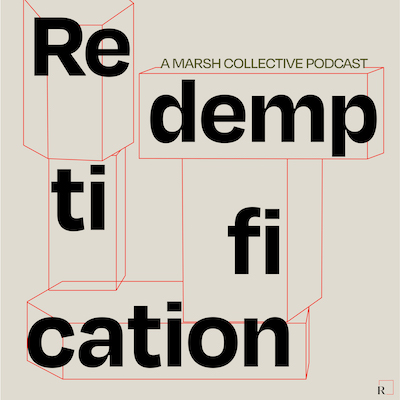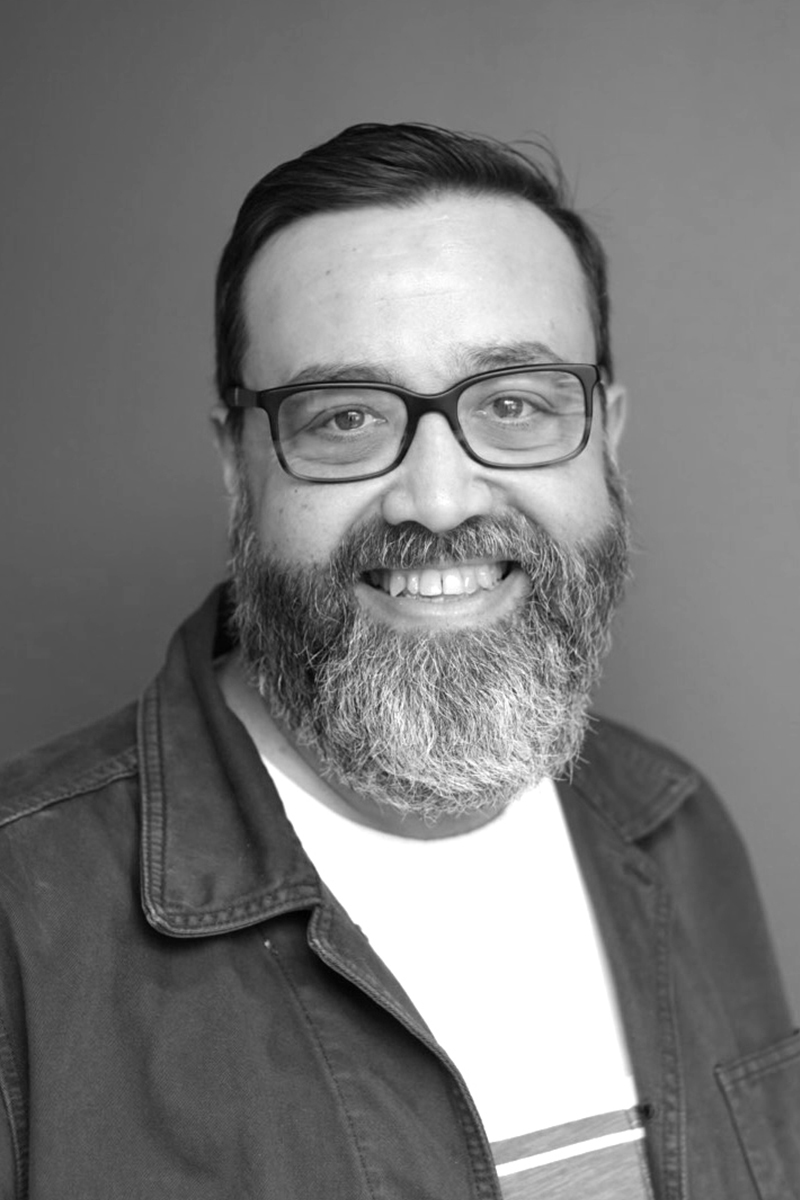That’s Not Normal, a Patron Journey with special guest Allan Branch
Ty has a great conversation this episode with an incredible, third-generation entrepreneur, Allan Branch. Allan is from Panama City, Florida and discusses his journey from software development to investing in real estate and community development. Branch grew up in a family of entrepreneurs who owned restaurants and car washes, which gave him a unique perspective on business. After selling his first software company, he began investing in real estate, starting with a small quadplex and gradually moving into larger projects in Panama City’s historic downtown. Branch emphasizes the importance of storytelling and community engagement in his work, and he is running for mayor in the next election to further his efforts in revitalizing his hometown.
Insights & Inspirations
- Allan Branch (05:16): And I grew up hearing my dad talked to his friends about debt service and curb cuts and grandfathering of sign codes and variances and dealing with employees and firing employees and hiring and marketing. And we didn’t really grow up watching sports or politics. We grew up talking about car washes and restaurants and dealing with people and my dad dealing with employees of the carwash, which were unorganized and a lot of ’em had money troubles and family issues. And we would talk about those things. And I saw my aunt and uncles and dads fire people and hire people. And so that was my normal. So what your kid’s normal is a lot of times dictates how easy things are later in life. So starting a business, having a job was unusual. I just thought everyone started a business and everyone went around as a kid being filled with kind words from their town. And that’s not normal. It took me a long time to realize that.
- Allan Branch (06:10): It took me a long time to realize that. But I got into software and really just took that. I had one job out of college in Birmingham, Alabama, and immediately started freelancing in my off time building websites for people. And that was 2003 ish and really got into software. I had a great business partner for many years in the software business that really mentored me.
- Allan Branch (07:20): ….and just kind of carried that forward into software and sold those and subsequently started in real estate. So just kind of carrying the lessons through into these new businesses.
- Allan Branch (09:18): in 2015, we sold the first company and it was a very, very small seven figure exit. It was just enough money where most people would buy a lake house, an RV, a new truck, and a big ass boat and be like, whoa, look at me everybody.
- Allan Branch (09:51): And so we started looking at all these ways, what do we do with this cash? Do we spend it on toys? Do we put it into something? Do we put it in the stock market? And for me, I didn’t know. And so I run across stories like you guys and Incremental Development Alliance and people like that, and you start seeing how towns get revitalized. And so I started looking at like, well, how do people make mistakes in this real estate stuff? And it’s usually when they bite off bigger things than they can chew.
- Allan Branch (10:46): And so I want to create businesses along the way that make lots of mistakes, but lots of small mistakes. And so we started, how do you get into real estate? Well, I didn’t know anything about construction, so I was like, all right, I’m going to build a shed in my backyard. …I learned about soffits and what is putting things on sixteens and headers on doors and what’s house wrap and what is R-value and all those kinds of things that you might learn your first two or three years being in that industry. I learned it through building a little shed.
- Allan Branch (11:39): And so we started looking at what’s the next step? And so we found a little quadplex and I would say in a blighted part of town, not in downtown Quadplex was like 2,400 square feet and it was like 40 bucks a square foot. And so I think it was $80,000.
- Allan Branch (12:05): Alright, what’s that 10 grand? Okay, I can survive that mistake. Alright, it needs new electrical service. Alright, what’s that five grand, 10 grand, whatever. I can survive that. So really I can survive the mistakes of an $80,000 project and learn a little bit. And that project went well. The mistakes we learned were probably more like two and $3,000.
- Allan Branch (13:14): And then we started looking at downtown, which is a whole different story. Our downtown in 2017, nobody wanted to be here. And the prices, the sell prices reflected, it was literally $10 a square foot to buy a building. Now those buildings may need new roofs and new plumbings, but you look at this product downtown and you go, why is it $10 a square foot here? But an old metal building next to the paper mill is a hundred dollars a square foot or $80 a square foot
- Allan Branch (14:17): The problem is there’s no renters. The numbers of the renters were paying so little, you’ve seen it. You can’t afford to fix the buildings and buy them at a bank level, they’re like, nobody’s renting there.
- Allan Branch (14:30): And so it takes a couple to change a market, you have to have a couple, at least one crazy person who’s changing the market, changing the market with how the buildings look, changing the market with getting renters to pay more.
- Allan Branch (15:34): So we started buying up downtown and promoting the stories of downtown. And I sort of just fell in love with the stories, realizing that my family was a part of those stories. My dad grew up half a mile from here. And you start realizing how important stories are and realizing what legacy is. Legacy is when you’re a part of a story.
- Ty Maloney (17:47): you move from, you understand the business of property to a whole other element that I think is expected when you go into a downtown, because so much of a downtown, the fabric of that place is embedded. Like you said, these stories are embedded. Our historic downtowns are the destination markers for place
- Ty Maloney (18:48): But there’s also this embedded story in you and you have this really unique story in the sense that you’re a third generation entrepreneur from Panama City. Like you said, you’ve carried this Branch name, it allows you, it’s almost like you’re implicated in a way that no one else could be implicated. So this identity of being a patron is something you’re walking through and it’s at some point what started as, Hey, this is kind of an investment strategy to preserve wealth has transitioned into, wow, this is a bigger story and I want to talk about
- Allan Branch (19:45): And so the joke is Allan starts businesses that he wants in his backyard. That’s not evil actually. That’s really what you want. It’s especially when you live in the neighborhood, that’s sort of the opposite of gentrification.
- Allan Branch (20:05): John Anderson has a great quote, “your area that you’re developing your farm and the family farm.” If you’re thinking of it generationally, you don’t want to abuse the family farm. I wouldn’t build some business downtown that was detrimental to downtown. This is where, not just where my investments are, this is where my kids hang out, this is where I hang out.
- Allan Branch (22:26): So if you’re looking to change the rules of an area, your outside developer a lot of times comes in and goes, I’m going to do this. And everyone’s like, you don’t know what we want. You’re not from here. We don’t like those things. But I’m from here. I’m as Bay County, Panama City as it gets, and I ain’t hiding them. And people like that.
- Allan Branch (23:39): change comes from people, not person, people, multiple people. And especially with the limited amount of money I have and time, it can’t be, Allan’s the only one that knows how to get through these processes and get things done. It’s got to be other people figuring it out as well. It can’t be just me.
- Allan Branch (26:08): When you invest in downtown too, it’s one of the few places, I mean your neighbors will always, no matter where you invest, give you your input whether you’re building a quadplex in urban sprawl or building downtown. But downtown people really tell you their opinions on what it should be because that area represents them as opposed to urban sprawl. The target doesn’t really represent them, but downtown represents the heart. That’s what people say is the heart of the city. They mean when people come to a city, they say, show me your town. They usually take ’em to downtown.
- Allan Branch (33:02): And so if you don’t want to be an owner operator, you’re really trying to guess the smallest scale of the restaurant that will allow you to have managers that insulate you from day-to-day problems, right? Food truck, one food truck or a hot dog cart. You can’t hire a manager and personnel and then expect money to come to the owner. That’s an owner operator size.
- Allan Branch (34:53): I’m trying to cultivate managers and people who have not been given a chance to lead
- Allan Branch (38:18): What’s easier than just telling stories of your town? Why is the bridge name this and why is the school name this? And who was the first black police officer? And how did the town form and how did we overcome adversity that just gives him a home run pitch to do And History Class [bar in Panama City], the goal is to celebrate our community and our community stories. And so the marketing tells the story. It doesn’t really talk about the products that much. So we hope that really raises civic pride, I think, to love a place. And a few of the stories, those stories are people who are normal, people who overcome adversity or pour themselves in the community in an unusual way, and they’re being celebrated and they’re usually forgotten within two years is the problem.
- Ty Maloney (40:13): the thing that I would take away from that is that I think the role, you take both, you use business as a vehicle, but you also this idea of storytelling and then at every juncture you find opportunities to plug people in because that’s the most authentic version of storytelling is when others are actively living out their story and then they’re sharing it and getting them to share it, like you said, whether it’s their skills or their talents.
- Allan Branch (42:35): Storytelling is typically not telling your story. It’s telling other people’s stories.
Information & Links
Closing Questions
What have you read that we should read?
- Allan Branch (51:06): John Anderson’s probably one of my favorite people, has a great way of looking at properties and how to incrementally get them in partnerships and that kind of stuff. I’m not a big business book guy. If you Google Zingerman’s, they’re a restaurant sort of group in Ann Arbor, Michigan that talks a lot about customer service and building these sorts of multiple small food and beverage concepts, that kind of an ecosystem. Seth Godin, if you’re not reading his blog, you should be. He’s an amazing writer. Takes two minutes to read his blog every day.
- Zingermans – website
- Seth Godin – blog
- John Anderson – website
Who do you know that we should know?
- Allan Branch (47:47): Yeah, I think Revitalize or Die. I think you guys are doing tremendous work. John Anderson, Incremental Development Alliance. Anytime you run across a downtown that looks great or a building it looks great, talk to who owns this place. I mean, I’ve called Ocala City, they’re planning and just been like, who’s building buildings down there and doing cool stuff and getting connected into Main Street stuff.
- Revitalize or Die – website
- Redemptification – episode with Jeff Siegler from Revitalize or Die
- Incremental Development Alliance – website
- John Anderson – website
Where have you been that we should go?
- Allan Branch (49:01): Ocean Springs, is awesome. Certainly we’ve been to Opelika. Opelika is a great spot too. There’s a lot of big city downtowns. And so to me, big city downtowns are not really our model to copy or to study. And so I love the little town that has too many pond shops and used car lots. That’s Panama City. So how do these other small potentially coastal cities and the lessons they learn apply to our city? So I’m not really looking on like, well, how did the Lower East side of Manhattan? No, no, no, no. I’m looking at Ocean Springs, Mississippi, which is off of Biloxi, typically a tourist town, things like that. And I’m looking for people or stories that either break my assumption on a thing I’m about to do or confirm my crazy idea makes sense, which is what your podcast did multiple times of downtown historic buildings being a higher asset class.




